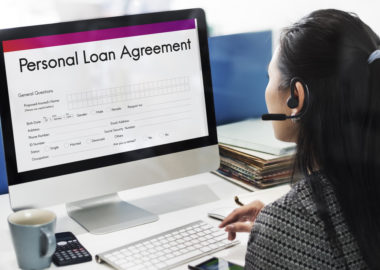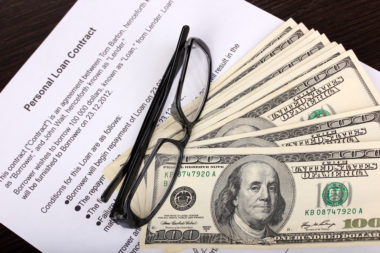Microloans are a great option for entrepreneurs who need a small loan that might not qualify with a traditional bank or credit union. They work similar to traditional loans, but there are a few key differences that you need to know. We’ll explain microloans and compare them to traditional loans to help you determine which loan type is right for you.
Table of Contents
What Is a Microloan?
A micro loan is a small business loan no more than $50,000 that is issued by an individual or through an intermediary nonprofit organization. Most microlenders aim to help individual business owners and entrepreneurs get the initial capital they need to cover startup costs, hire their first employee, or purchase the initial inventory they need. Microloans can be funded by a single individual or by a collective group who all contribute a portion of the total loan amount.
Microlending has changed many lives and improved economies, especially in developing countries and among women, minorities, and underserved communities. This form of lending and borrowing is made possible by the internet and modern technology, which allow us to connect people from anywhere in the world, share our stories, and provide opportunities we might not have had available in the past.
A microloan could be as small as $25-$50, which can make a world of difference for someone in a developing country that may just need a food cart to get their business started. But generally, microloans range from $500 up to $50,000. The average microloan amount is around $13,000, according to U.S. small business statistics from the SBA.
Microloan vs Traditional Loans
Microloans and traditional loans basically operate just as any loan would: a lender offers a lump sum on certain terms and the borrower agrees to use the funds as disclosed and pay back the premium plus interest once the loan has matures, or split up into payments over time. However, microloans hold their own category under the small business umbrella. For instance, microloans can be no more than $50,000 and must not be given terms longer than six years.
While microloans are used all over the world, they are most frequently given to people who don’t have access to traditional funding: women, minorities, people with bad credit, and people in developing countries. If you’re interested in a small business loan, consider applying for a traditional loan first because you can qualify for a larger loan over a longer term agreement, and for a lower interest rate.
Interest rates are always subject to change, but the SBA requires interest rates for microloans to generate around 8 to 13 percent which is considerably higher than the interest rate for a small business loan. As of November 2018, the SBA set the maximum interest rate that banks can charge on loans at 5.04% to 5.32%. These interest rates depend on the type of loan you apply for and the amount of the loan. Generally, larger business loans are cheaper than a microloan.
Micro Business Loans
Micro business, or micro enterprise, improves individual lives, families, communities, and economies by providing business opportunities to entrepreneurs and people with great ideas but who are disadvantaged by something such as poverty or lack of access to banking institutions. Microloans serve micro businesses to supply them with the capital they need to purchase inventory, office supplies, or hire employees. But almost any registered business is qualified to apply for a microloan.
Getting approved for a micro business loan can be tough and every lending organization will have its own standards and requirements for approval. In general, you will need to prepare these items:
- A finalized business plan outlining your projected day-today operations. It should describe the type of business you wish to start, how it will operate, what you’ve accomplished in your business so far, and any other information relevant to your business.
- Proof of what you have already invested in your business. Potential lenders will want to see that you are personally dedicated and invested in your own idea before investing themselves.
- If your credit report looks bad or has a few mistakes on it, you will want to take some time to contact the credit bureaus and correct anything misreported. Improving your credit score and cleaning up your report will also improve your chances of getting approved for your loan.
- You may also choose to include a personal story or biography explaining why you are starting this business and what makes you qualified to run the business. Explain your background and any experience you have in the industry or relevant experience to your business idea. Make a selling case for why you deserve the loan.
- It is also recommended to offer some form of collateral or personal guarantee that you will not default on the loan. Most microloan borrowers will not have any form of collateral to offer and could have a bad credit report, so anything you can offer could be a competitive advantage.
SBA Microloans
Some microloans are backed by the SBA, who launched a program in 1992 to help encourage economic development of entrepreneurs in underserved communities. Since most banks have strict qualifying guidelines, entrepreneurs with bad credit or no credit struggle to get approved for traditional small business loans. Or an entrepreneur might need a significantly smaller amount of money than traditional loans permit, so the SBA started endorsing microloans.
Keep in mind that while SBA backs some microloans, they do not service them or issue them to borrowers. They simply distribute funds to designated community-based nonprofits who serve as intermediary lenders. You can find a list of intermediary lenders on the SBA site. The intermediary organization will offer management services and technical assistance for your loan. Lending and credit requirements are at the discretion of the lending organization. SBA-backed microloans are not your only options available, be sure to gather terms from different sources and compare before taking one.
SBA-backed loans have a few requirements:
- Loans can be as low as $500 but no greater than $50,000.
- The loan term max is six years.
- Interest rates will most likely fall between 8 and 13 percent.
Personal Microloans
While most microloans are used by entrepreneurs to start a business, usually a micro enterprise or small business, they can also be used for personal reasons like getting out of debt. Keep in mind that when applying for a personal microloan, you will be expected to disclose the purpose of the loan for potential lenders to consider. You may be less likely to get approved for a personal microloan, because lenders are often more attracted to investing in a business (which is generally designed to turn a profit, increasing the likelihood of repaying the loan) rather than personal loans.
Microloans as an Investment: Micro Lending for Profit?
As an investor in microloans, you might be more familiar with the term, “peer-to-peer lending” or P2P. Peer-to-peer lending is the practice of lending money to individuals or businesses through an online service that matches lenders with borrowers. People who wish to invest their savings, and also help minorities or people in poor, developing countries, may find microlending highly rewarding.
Microloans can command high interest rates because of the higher risk involved. Since borrowers of microloans usually have poor credit and the average borrower has a higher risk of default. This makes microloans attractive, although risky, to investors. Borrowers usually don’t have any collateral to offer, so if they default on their loan, investors lose out on their money.
Because of the high risk for investors, they often choose to invest small amounts per loan and spread their investment across a diverse portfolio of many different microloans in order to decrease the chances of losing their entire investment.
If you’re interested in taking a microloan or using your savings to get involved in P2P lending, check out the SBA-backed intermediary lenders, as well as these top peer-to-peer organizations:
Image Source:https://depositphotos.com/





